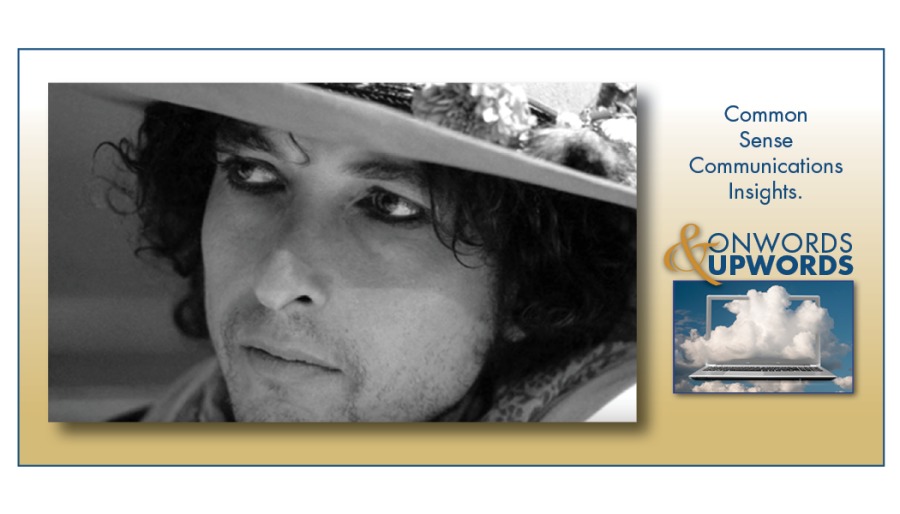One Writer’s Creative Methodology. Works For Me. Might Even Work For You.

“I wish I could write you a melody so plainThat would hold you dear lady from going insane
That would ease you and cool you and cease the pain
Of your useless and pointless knowledge”
~ Bob Dylan, Tombstone Blues ~
Author in Source Title
There are a number of very good reasons why Bob Dylan is considered to be one of the greatest living writers of our time and has a Nobel Prize to prove it.
One of them is because you can literally take any verse from the nearly 800 songs he has written and recorded and write a whole post or essay or even a Master's thesis about it.
The verse above is a good example of what I’m talking about. In it, he makes two powerful statements. One is about love and the other is about the world at large.
Only a writer who is either possessed by a demon or completely in control of his faculties can write like this.
Our minds are very cluttered. They are filled with all the flotsam and jetsam of living, plus all the thoughts we’re thinking, the plans we are making, the stuff we can’t forget from our education, the advertising messages that hit us with astonishing frequency and a lot of other things that just get stuck in our heads.
Learning to either shut that out and get down to what you are really feeling about what you are writing or, conversely, learning to channel all that “useless and pointless knowledge” into something constructive is the constant challenge every writer faces.
And not just every writer. I know that a lot of you out there reading this don’t consider yourselves to be writers. But because you have become enslaved by this content production marathon that we are all running, you have become writers, whether you like it or not.
Writing Is A Tricky Business
If you want to keep it from driving you crazy, you really need to develop some sort of methodology that works for you. And though I do believe it’s one of those things that you need to do for yourself, it doesn’t hurt to see what someone else’s approach entails.
Now I don’t claim to be a guru or a teacher or anything even close. But I do believe that sharing insights is a big part of why we’re here and writing posts in the first place. So here’s my two cents worth.
1. Nothing Good Happens Without An Idea
Ideas are blossoming in your head all the time. The thing you need to do is realize that and pay attention. A lot of good things happen when you pay attention to your head.
It really doesn’t matter where the ideas come from, because I have learned that you have almost no control over the stuff that pops into your head.
e.g. The idea for this post came to me as I was taking a couple of Tylenols because I have a cold. I know the lyrics to almost all of Bob Dylan’s songs. I think about them a lot because, well, it’s amazing writing and I’m happy to carry a great deal of it around in my head. I even sing them to myself from time to time. But you don’t want to hear any of that.
2. The Idea Becomes The Challenge
Once I had the idea in my head, which was very much an abstraction at this point, the challenge then became: How do I write something that would both explain the lyric and make a point or two about writing?
Well the lyric is more or less self-explanatory. But the interpretation is what’s important. My understanding of what Bob was getting at here is that the clutter we carry around in our heads all day is actually a form of pain.
If we can learn to set some of the clutter aside for a while, that will both alleviate some pain and free up some space to do, well, whatever we want. Write a song, or an essay or an article…whatever. But, most importantly, we’ll be able to do it without a lot of brain static.
So that’s the thought. And it begs the questions, how does one do that?
3. Actualizing The Idea In Your Head
I can only speak for myself but I personally favour getting out on my bike and riding. I find that particular activity frees up my mind and and literally blows a lot of other thoughts out of the way of the particular thing l want to focus on.
I didn’t write this post when I got the idea. All I did was open a file and write out the lyric. Then I went for a ride and in my head went though several possible destinations using that lyric as a starting point.
It could have been a short story about two lovers. It could have been a highly focused essay on what happens to the human brain when it’s in a constant state of stimulation. It could have been a psychological exploration into the mind of Bob Dylan. It could have been a poem of my own about pain and loss…
It could have been a lot of things. But it ended up being a post about writing because I’ve been doing a lot of those these days and really like sharing my insights.
4. The Actual Writing
I don’t start writing until I have the whole piece in my head. Not all the words, because that’s the fun part. But the logic, the narrative flow and the resolution.
When I do start writing I find that the story more or less tells itself.
5. Post Production
After that, it’s really a question of doing what you do to get one of these things ready.
First, I read what I have written aloud. Reading aloud is important because you can hear an awkward phrase or an incomplete thought a lot easier than you can read one.
Then I go back through it and make corrections. Look for redundancies. Focus on style and narrative flow.
Does this make sense?
Does it make a point?
Does it resolve itself?
Does it feel like me?
These are the things you have to ask yourself and answer to your own satisfaction before you hit the publish button. Because if you are
not in agreement with yourself, you will never publish an authentic piece.
Authenticity Separates The Wheat From The Chaff
People will forgive some awkwardness and structural flaws in your writing, because those are the kinds of deficiencies that 80% of the posts you read possess anyway.
But they won’t, no, they can’t, forgive a lack of authenticity. And the reason for this is simple. If whatever you are writing doesn’t feel like you, there’s really no point in letting anyone read it. Because that authenticity is the gateway to their getting to know who you are.
I have written nearly 1500 posts of this length or longer over the years, and so writing in my own voice comes pretty naturally to me. And if you have read any of my stuff here on beBee you will see that it’s all pretty consistent.
What I have outlined here is how I keep it that way. It may work for you. Or it just may get you thinking about creating your own method for assuring authenticity in your work.
I sincerely hope it does. Because that’s the kind of stuff I like to read and promote.
The Learning
• Find an idea that you think will make a good post.
• Clear your mind of the ‘useless and pointless knowledge' that clutters it through whatever means works for you.
• Think it through until it feels complete in your head.
• Write it out
• Read it aloud
• Fix it and read it again.
• If it feels like you, publish it. If it doesn’t, tweak it until it does. Or scrap it and try something else.
You can do it. And to quote Bob Dylan again…”You will not die…it’s not poison”.
This is the second in a series about blog writing...you can read the first post here. https://www.bebee.com/producer/@jim-murray/some-very-basic-things-almost-anybody-can-do-to-create-better-blog-posts

You can follow Jim
On beBee: https://www.bebee.com/bee/jim-murray
On LinkedIn: https://www.linkedin.com/in/jim-murray-b8a3a4/
On Twitter: https://twitter.com/Jimbobmur
On Facebook: https://tinyurl.com/y97gxro4
Articles from Jim Murray
View blog
(This was originally written in 2020) · We’re having the worst snowstorm of the season so far as I s ...

I · can’t speak for all writers, because I’m only this one and that’s really all the opinion I am en ...

A lot of people, especially those who are environmentally aware, are leaving their cars at home a lo ...
Related professionals
You may be interested in these jobs
-
Coordonnateur(trice) à la sanitation
Found in: Talent CA C2 - 3 days ago
Fleury Michon Montérégie, Canada TemporarySOMMAIRE DE LA FONCTION · Le(la) coordonnateur(trice) sanitation est responsable d'assurer la formation et la gestion du personnel de son équipe de nuit. Il(elle) organise le nettoyage des installations et du matériel de l'ensemble de l'assemblage tel que requis sur son quart de ...
-
administrative assistant
Found in: Talent CA 2 C2 - 1 day ago
SOUTH GRANVILLE BUSINESS COLLEGE Vancouver, CanadaEducation: · Expérience: · Education · Secondary (high) school graduation certificate · Tasks · Arrange and co-ordinate seminars, conferences, etc. · Plan and control budget and expenditures · Establish and implement policies and procedures · Assign, co-ordinate and review proj ...
-
food counter attendant
Found in: Talent CA 2 C2 - 16 hours ago
Sizzling Wok Vernon, CanadaEducation: No degree, certificate or diploma · Experience: Will train · Tasks · Keep records of the quantities of food used · Package take-out food · Portion and wrap foods · Prepare, heat and finish simple food items · Serve customers at counters or buffet tables · Stock refrige ...




Comments
Fay Vietmeier
4 years ago #5
Robert Cormack Thank you Robert ... great insight ... love them all ;~)
Robert Cormack
4 years ago #4
Fay Vietmeier
4 years ago #3
Patrick Scullin
4 years ago #2
Debesh Choudhury
4 years ago #1